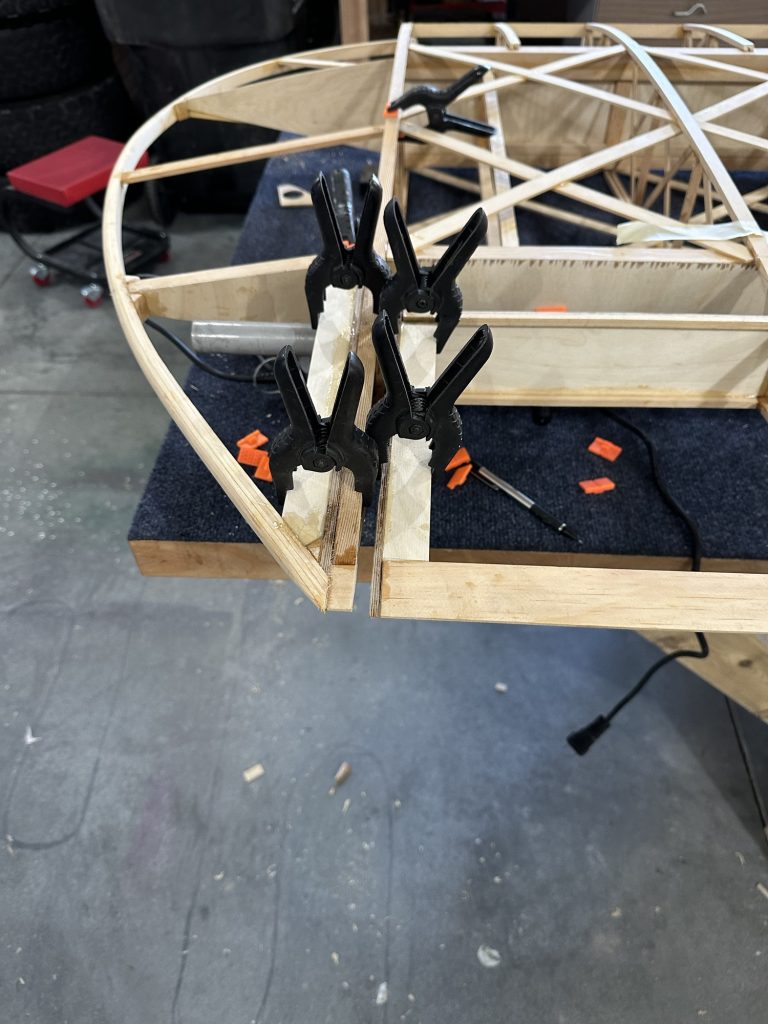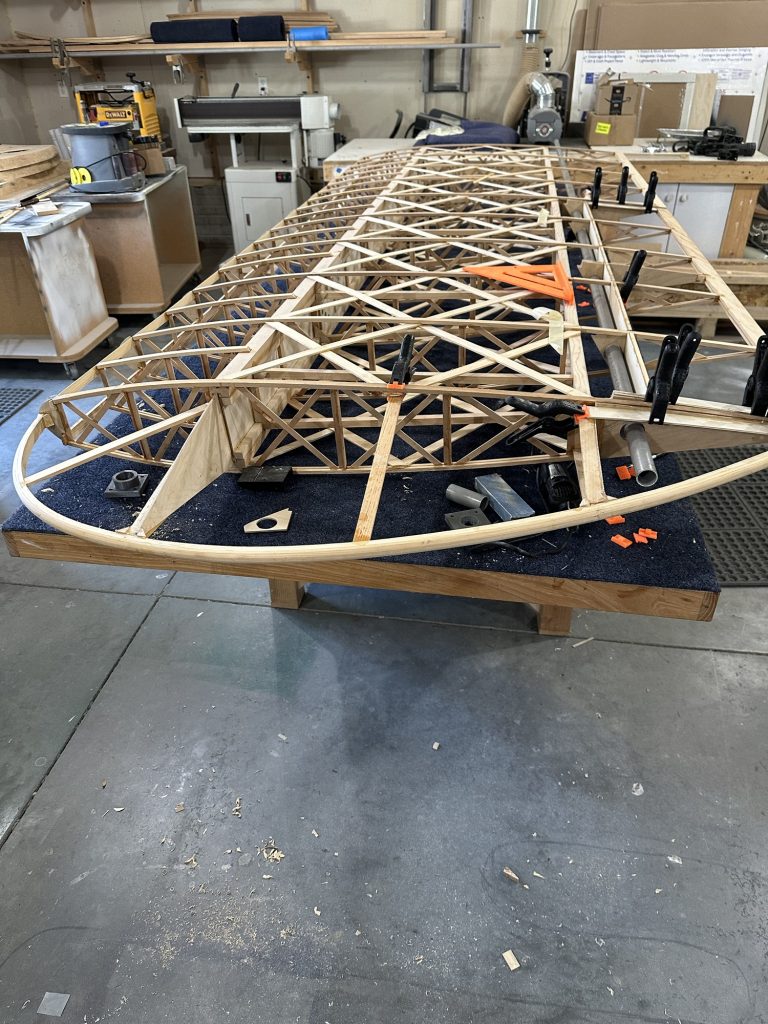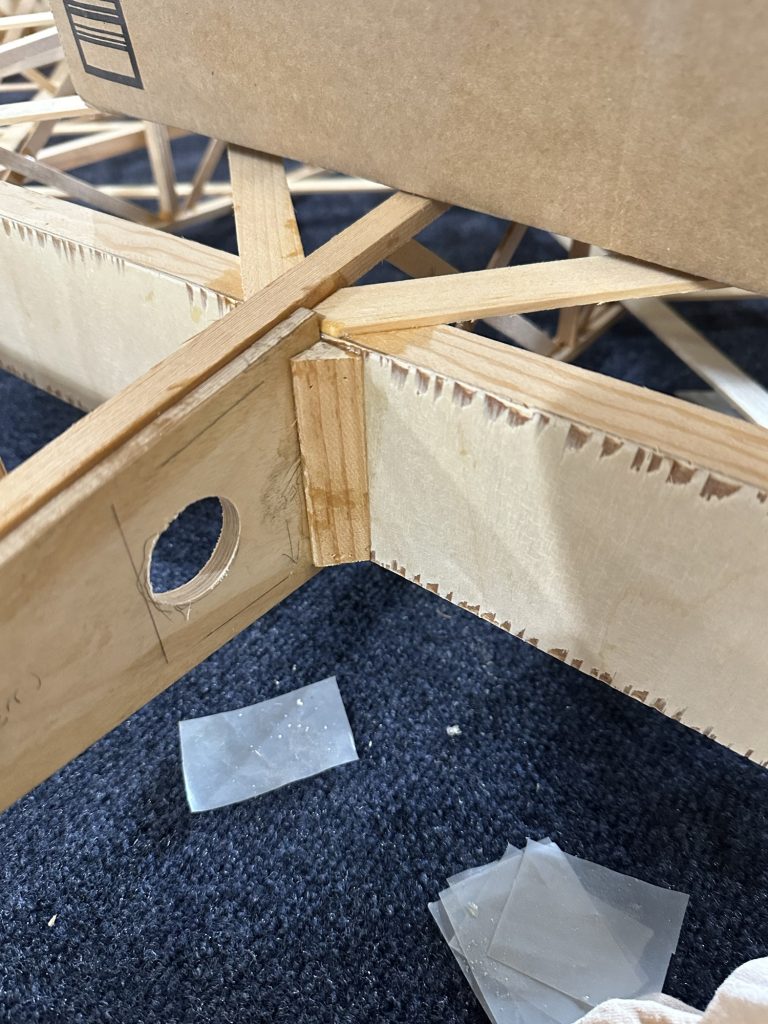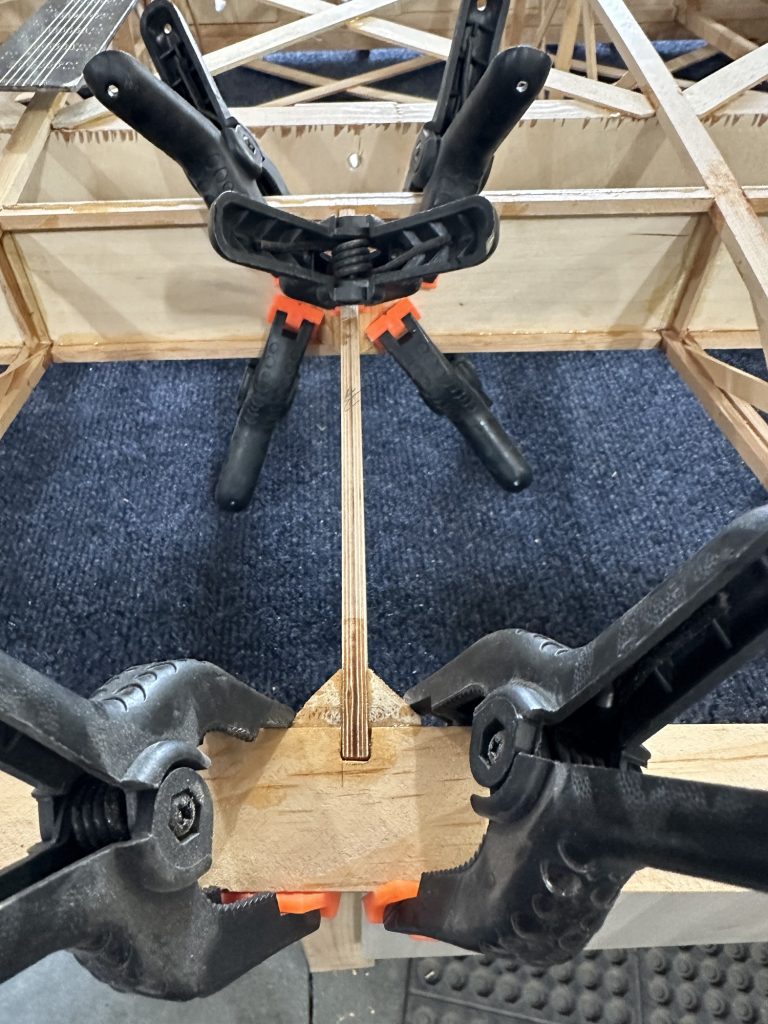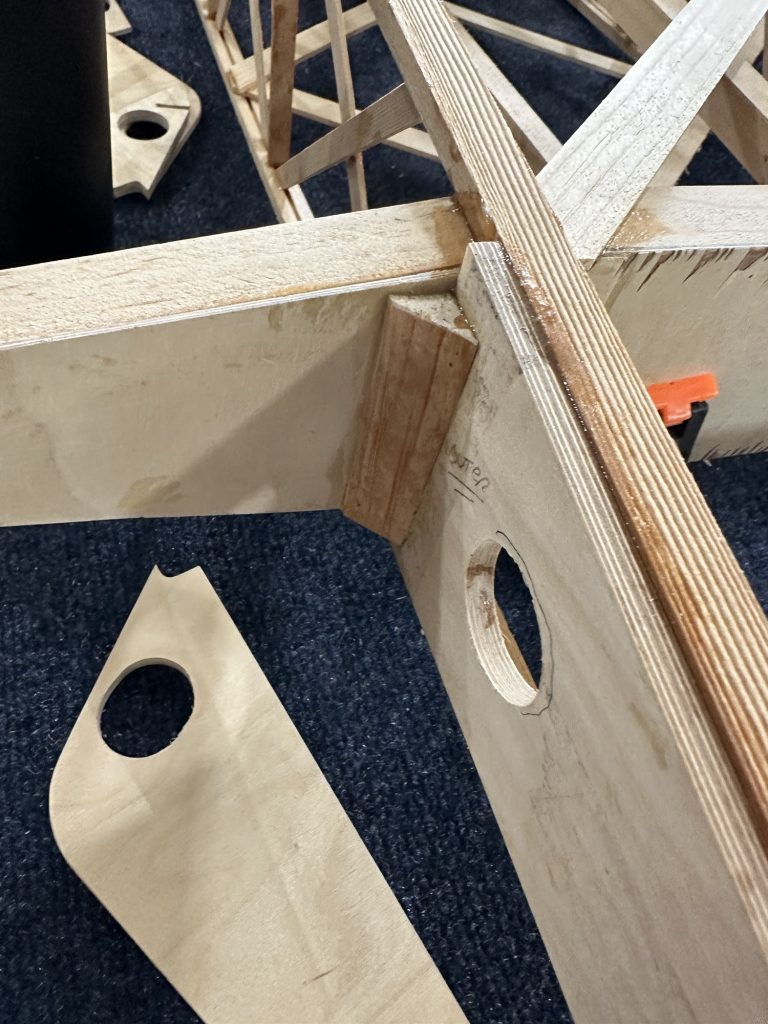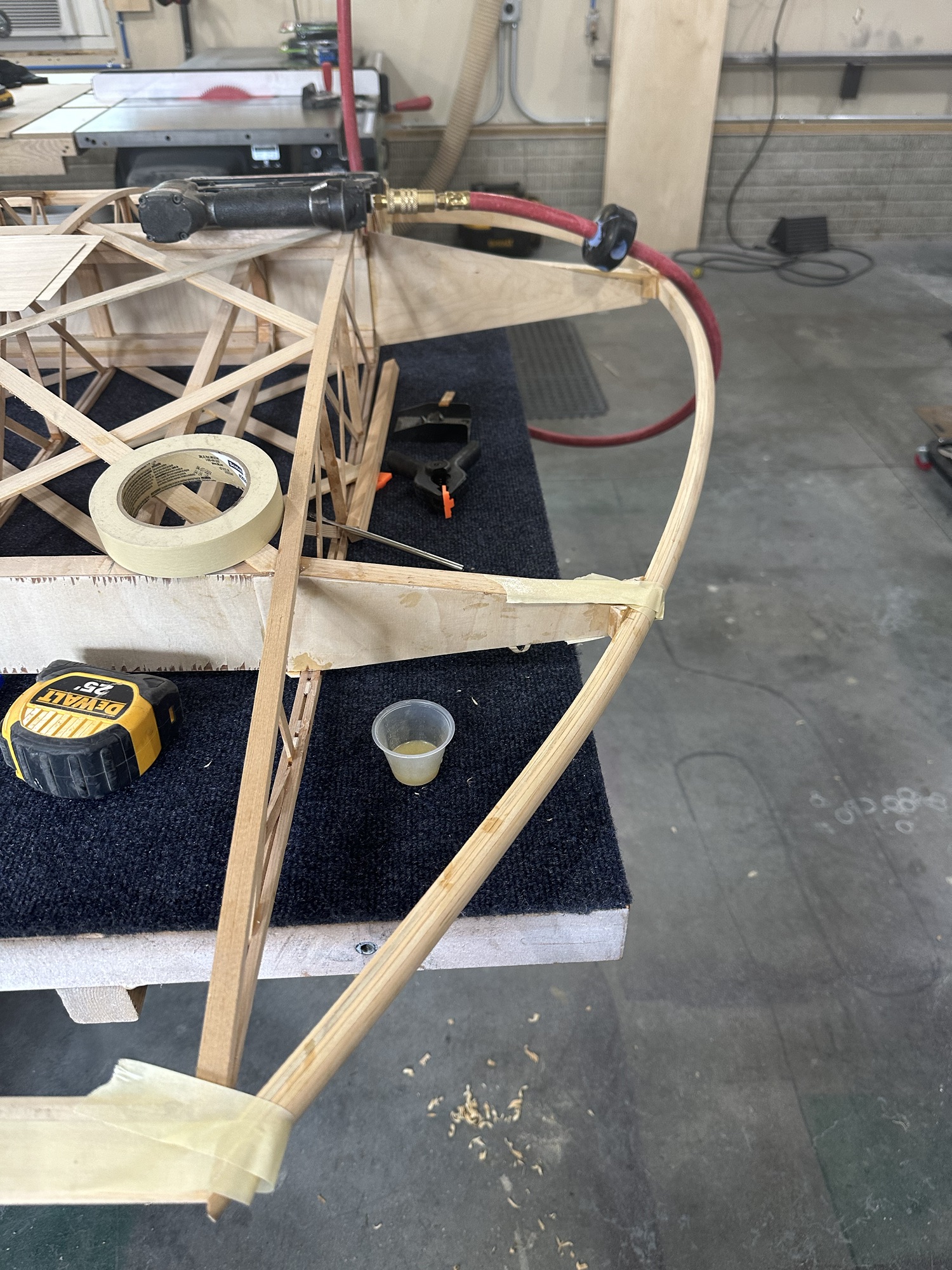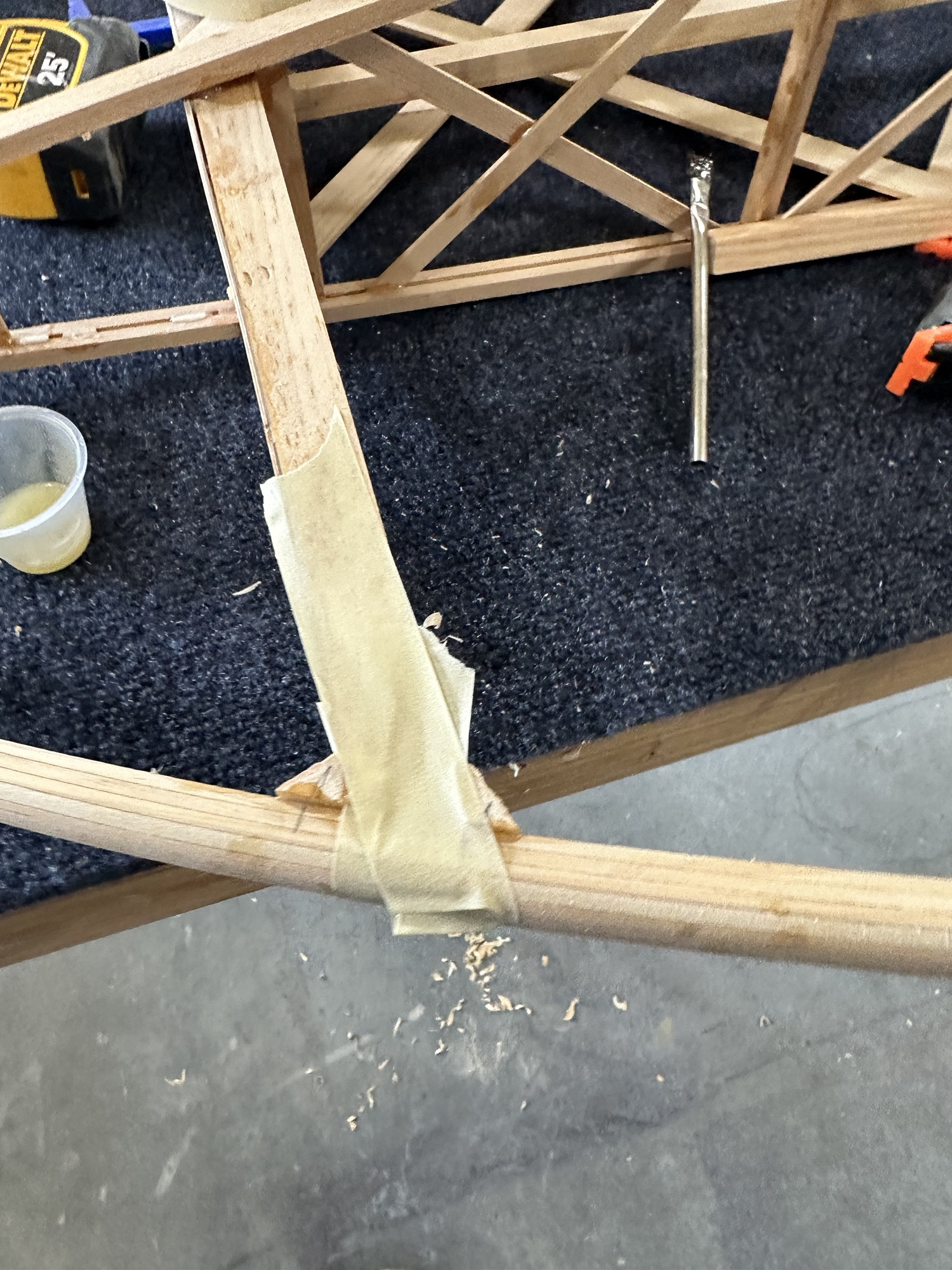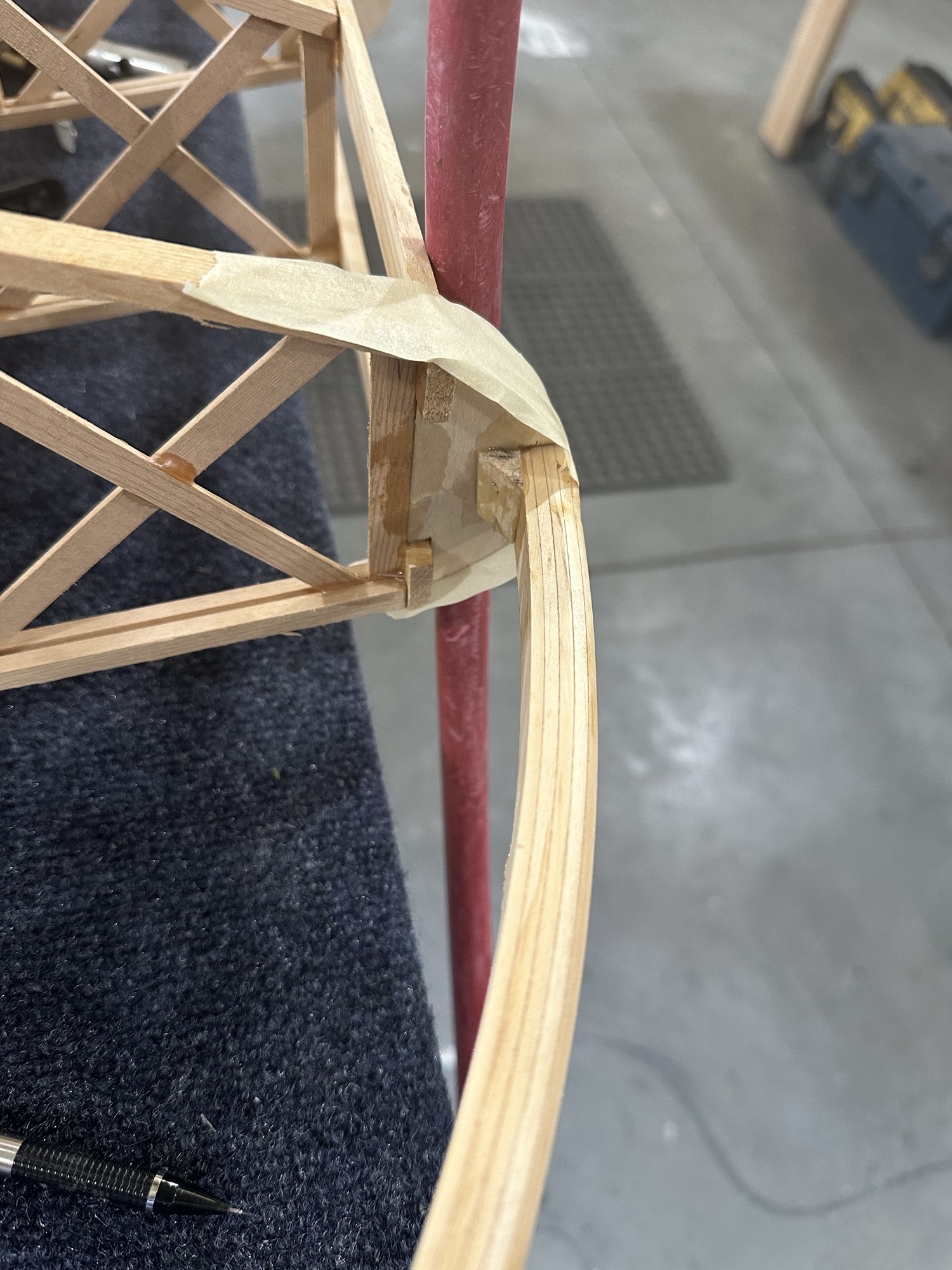This morning I woke up early and couldn’t get back to sleep, so I headed over to get a little work done. I glued and clamped the aileron end plates (CW34) in place, along with the corner blocking for them. I also did a little work shaving off some of the excess plywood and corner blocking on the wingtip bow. I’ll probably just have to switch to some low-grit sandpaper to get that job done. I’d really like to get the plywood gussets cut and glued in — oh, wait, there’s more bracing for the wingtip bows to be done…
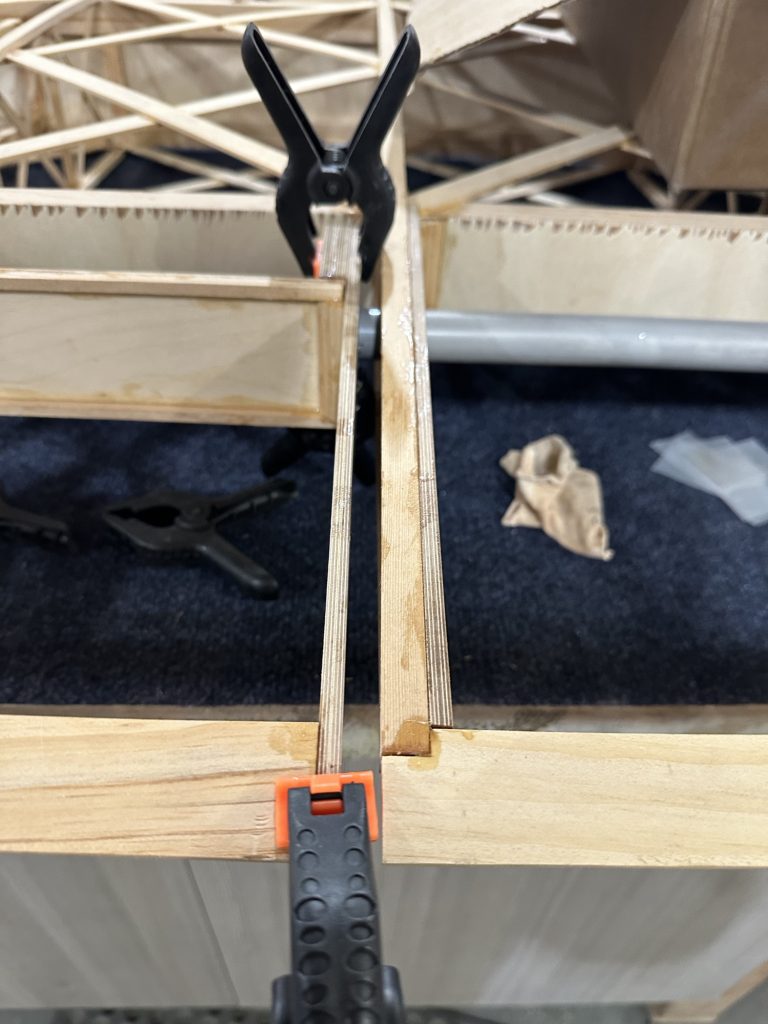
This afternoon I figured that after 8 hours or so it was safe to move on. I made another trip over and cut and installed the CW40 plywood stiffeners for the aileron and each end of the aileron bay. Then I cut and glued in supports for the wingtip bow. All of this is just the bottom side — since the wing is upside down. I’ll do the top side once I flip the wing back over, which will likely be tomorrow.
Getting two work sessions per day in could really speed things up. I think I’ll try and do more of that. I’m not thrilled with the fact that I seem to be averaging only three days a week working on this — I need to get a fire lit under things, figuratively speaking.

